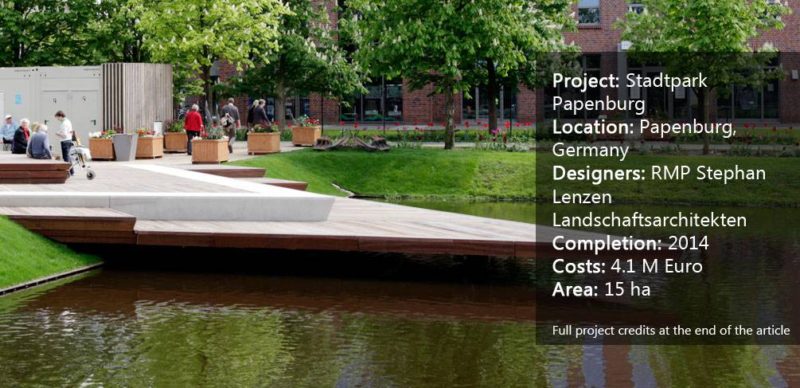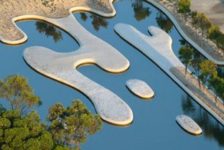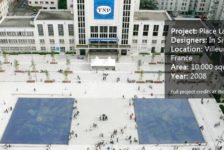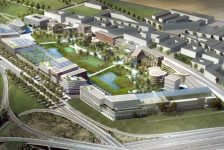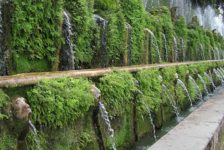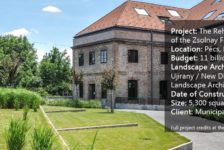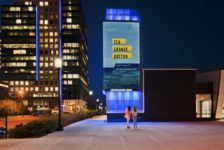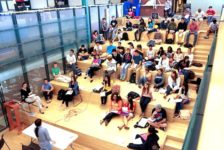Stadtpark Papenburg, by RMP Landschaftsarchitekten, Papenburg, Germany. Have you asked yourself what a garden show is or what the transformative effects of it are? Since becoming popular in Germany and Austria in the 1980s, garden shows have aimed to improve the quality of life and the urban climate of cities. They also work toward regional-political development objectives. Regional garden shows are developed on disadvantaged sites, transforming them into attractive and pleasant locations. RMP Landscape Architects have extended the benefits and advantages of a regional garden show into a functional adaptation to meet the current requirements of the city park in Papenburg, Germany. Embedded in a larger context of city development, the implemented regional garden show in Stadtpark Papenburg is also a method of urban marketing, increasing the publicity and level of awareness of the city. Let’s see how these elements – regional garden show, urban marketing, and landscape design – interact in a single city park and how we can learn from such opportunities.
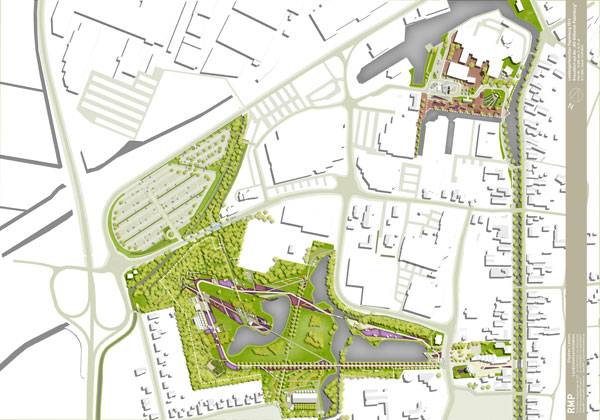
Masterplan of Stadtpark Papenburg. Image credit: RMP Stephan Lenzen Landschaftsarchitekten
Winds of Change – Stadtpark Papenburg
Located in the northwest section of Papenburg neighboring a shopping center, detached housing estates, and free fields, the city park has had to deal with the signature of nearly inconspicuous transit space. Where the shopping mall hides public activity and urbanity behind walls and detached houses preserve private leisure space, Stadtpark Papenburg has managed to evolve into an attractive and pleasant location. The park introduces a successful combination between new landscape elements and former structures in a city with maritime flair. (Papenburg is not only a center for shipbuilding, but also a center for flowers and horticulture – 35 M herbaceous plants and 25 M cucumber grow in Papenburg in a year.
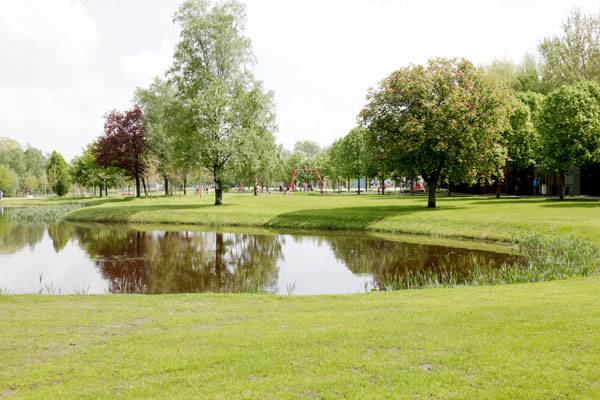
Stadtpark Papenburg. Photo credit: Juliane Werner
More Top Articles on LAN
- 10 of the Most Common Mistakes People Make in Planting Design and How to Avoid Them
- Interested But Not Confident? – Know How to be Good at Hand Drawings
- Top 10 YouTube Tutorials for Technical Drawing
Regional Garden Show – More than a Framework
Using the benefits of a regional garden show, RMP landscape architects brought a wind of change into the city with a new garden and park culture. Visitors and residents now have the chance to admire flower shows, ships, and water elements incorporated with an urban flair. Paying attention to the historical structure and existing vegetation, the designers combined the vastness of lawns with compact structures of native trees and shrubs, resulting in interesting light and shadow effects. The implementing company (Landesgartenschau Papenburg 2014) saw in the garden show not only a framework; they went beyond classical structures and made the area attractive through landscape investments.
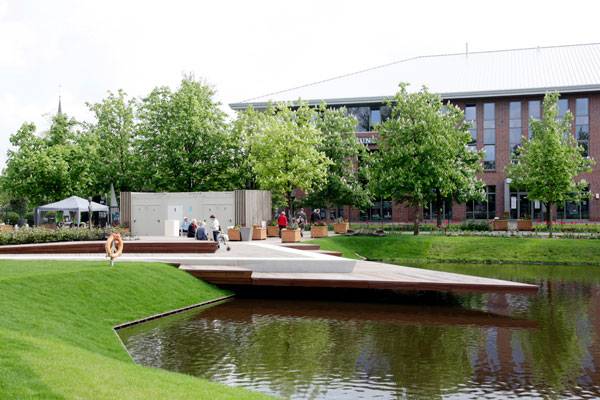
Stadtpark Papenburg. Photo credit: Juliane Werner
Recommended Reading
- Landscape Architecture: An Introduction by Robert Holden
- Landscape Architecture, Fifth Edition: A Manual of Environmental Planning and Design by Barry Starke
Stadtpark Papenburg As Part of Urban Marketing
In the economic development of a city, urban marketing is a strategic element. Marketing helps cities accomplish multiple objectives, such as developing tourism, attracting new companies, or consolidating technical infrastructure. But how can urban marketing benefit from landscape architecture? The city park in Papenburg is now a main element in tourism development, from which local companies can also profit and evolve. From a neighborhood perspective, residents now benefit from a newly designed park and can spend time in its direct proximity, which offers much more than a private garden.
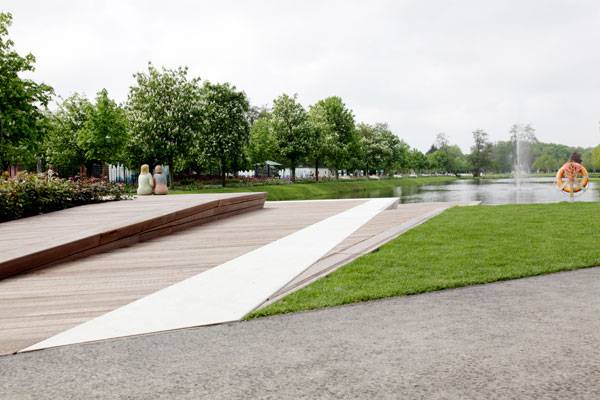
Stadtpark Papenburg. Photo credit: Juliane Werner
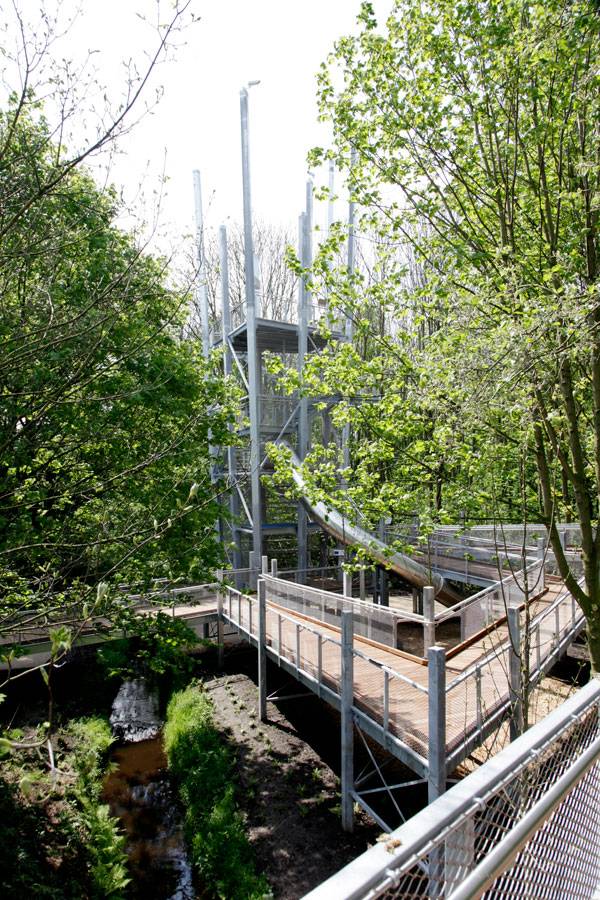
Stadtpark Papenburg. Photo credit: Juliane Werner

Stadtpark Papenburg. Photo credit: Juliane Werner
The Right Time and Right Connections
Before deciding to use a regional garden show to improve the livability and urban climate, additional factors have to be taken into account. Besides the location, economic considerations, and political perspectives, the transformation has to be made in the right time with the right connections.
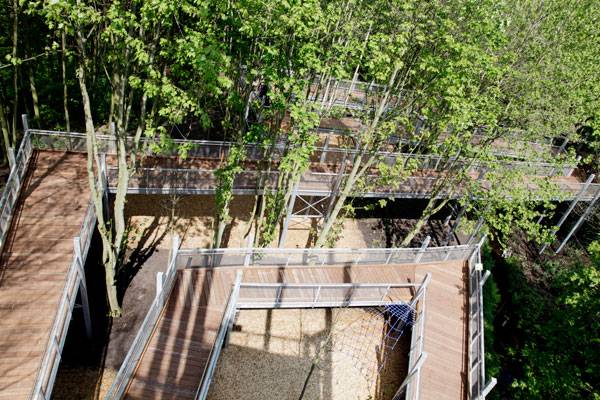
Stadtpark Papenburg. Photo credit: Juliane Werner
More Top Articles on LAN
- 10 of the Most Common Mistakes People Make in Planting Design and How to Avoid Them
- Interested But Not Confident? – Know How to be Good at Hand Drawings
- Top 10 YouTube Tutorials for Technical Drawing
Being part of a regional garden show means your project will profit from multiple benefits. In the case of Stadtpark Papenburg, bringing new details into the park but also paying attention to historical structures was almost a receipt for successful development. Being aware that landscape design within a regional garden show is a main element of urban marketing methods means creating different and multidimensional niches to cover the contrasting needs of residents, tourists, and developers.

Stadtpark Papenburg. Photo credit: Juliane Werner
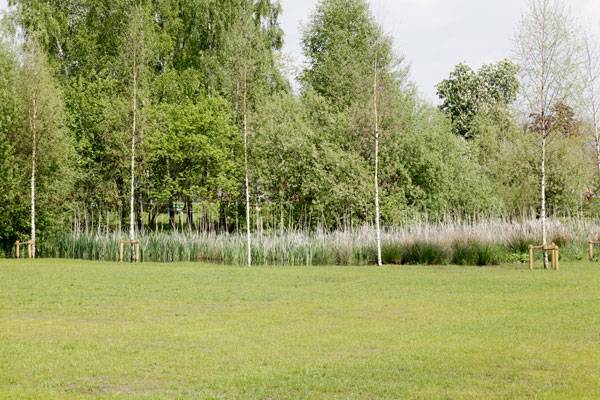
Stadtpark Papenburg. Photo credit: Juliane Werner
Questions to Reflect Upon
Even if a regional garden show reveals many positive aspects, it is “just” a time-limited program of active transformation. But what remains after the events, shows, and temporal staging? Which are crucial aspects that have to been taken into consideration after such a program? How can a city sustain the positive transformations after a garden show ends?
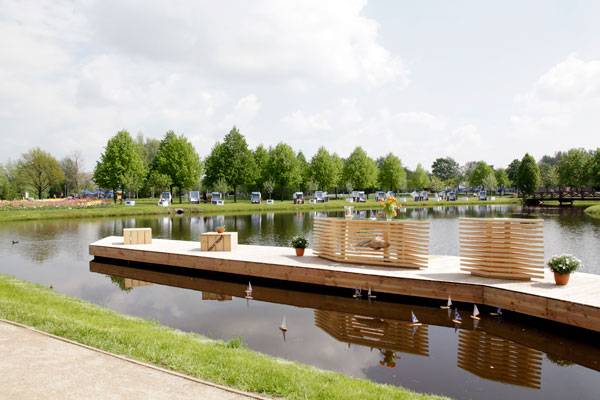
Stadtpark Papenburg. Photo credit: Juliane Werner
Full Project Credits for Stadtpark Papenburg
Project: Stadtpark Papenburg Location: Papenburg, Germany Designers: RMP Stephan Lenzen Landschaftsarchitekten. (Thomas Brenning, Philip Haggeney, Chris Hoffmann, Inga Janßen, Thomas Kißmann, Jan Kückmann, Karsten Lindemann, Franziska Schmeiser, Katharina Thoma) Completion: 2014 Costs: 4.1 M Euro Area: 15 ha Client: Landesgartenschau Papenburg 2014 gemeinn. Durchführungsgesellschaft mbH Show on Google Maps
Recommended Reading
- Landscape Architecture: An Introduction by Robert Holden
- Landscape Architecture, Fifth Edition: A Manual of Environmental Planning and Design by Barry Starke
Article by Ruth Coman
Published in Blog


